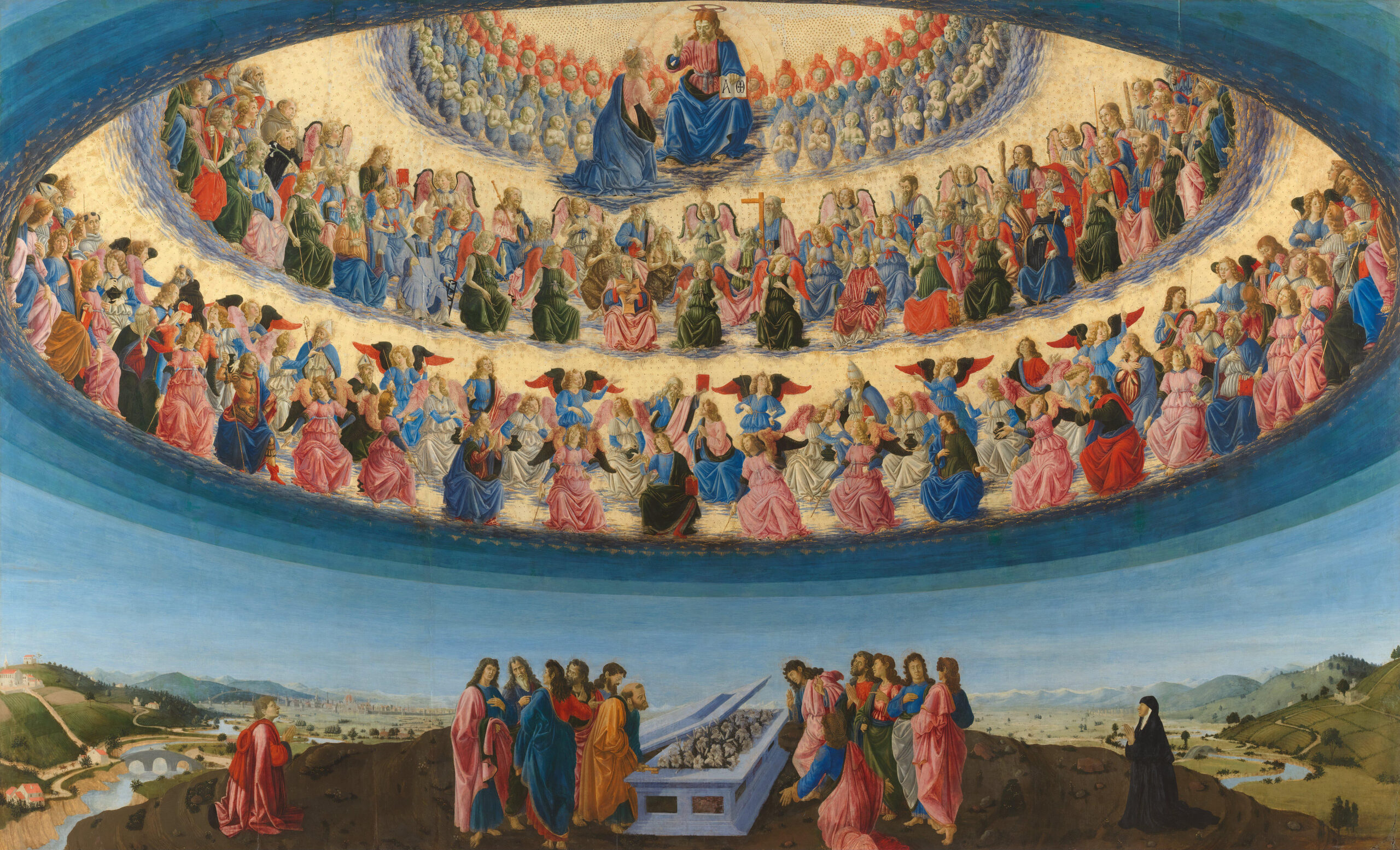A sermon on Hebrews 11:1–12:2 at Kensington Community Church in San Diego, CA, on the occasion of All Saints’ Day. Abbreviated to allow time for a celebrations of the saints.
The passage Katie read for us is from the book of Hebrews, one of the more poetic—and more controversial—books in the Christian New Testament.
One of the few things just about everyone agrees on about Hebrews is that it was composed somewhere between 75 CE and 100 CE, right around the time most of the gospels were being compiled.
But basically everything else about it is debated.
Controversies in Hebrews
It’s written to a church that was kind of starting to falter in their commitment to Christian faith and tradition, and so it contains a lot of passionate defenses of Christianity—defenses that can sometimes come off as exclusionary, or “we’re the best, why would you want to hang out with those guys over there?” But it’s also possible to read Hebrews as just saying “Christianity is great!” without having to cast judgment on anyone else. Our positive self-concept doesn’t have to be rooted in hatred of another. It’s possible to say “keep running this race set before you, the race that your forbearers ran!” without intending to speak ill of those running other races.
Another thing, this book’s name, Hebrews, has generally been understood as implying it was written to Palestinian Jewish coverts to Christianity, or maybe Jewish converts to Christianity broadly.
But what’s strange is, when this book quotes from Jewish scriptures (and it does that quite a bit), it quotes from the version of those scriptures used by Greek-speaking Christians.
For theological reasons, some people are still committed to seeing this as written to or about this Palestinian Jewish community, and I suppose it’s not impossible that they were the intended audience, but I prefer not to marry myself to that.
Another controversy: Christians have traditionally thought of this book as an epistle, or a letter, and many Christians still do.
But it doesn’t follow the format of a letter. The book itself doesn’t say who it was written to, and the title was likely added a few years after the book began circulating.
There’s no greeting, no letter-like salutation. The last chapter reads more like a benediction at the end of a church service than like a traditional conclusion to a letter.
That’s one of many things which gave rise to a more recent theory, that the book is based on either a sermon or a collection of sermons. That’s a theory I find that quite compelling.
It is a poetic and passionate, theologically dense work, that moves from one religious idea to another without stopping for breaks in between.
It quotes scripture left and right.
It dances between “I” and “we” the way you might when you’re with a congregation, not just writing down a letter to them.
And it just… it reads like a sermon! It’s got that cadence you expect to hear in a sermon.
But the biggest controversy about Hebrews is not whether or not it’s a letter, or who it was written for, or whether it’s too judgey. No, the biggest controversy is about who wrote it.
The book itself doesn’t name the author, and it’s the only book in the New Testament not to. There are other books which are open to debate—maybe they say they were written by Paul but are written more by someone writing in the tradition of Paul, that kind of thing. But this book has no signature on it.
There’s a whole list of people who are theorized to have written the book, but the one that stands out to me is the only one that has a good reason—or at least, a plausible reason—for the author not being named.
Can’t be what you can’t see
At my day job, in addition to the work my team does around helping working-age San Diegans find living-wage careers, we also have a team that’s focused on career development opportunities for young people.
My colleague who runs that work, Sarah, she says a big part of what they’re doing is career exposure.
“You can’t be what you can’t see,” Sarah says. And for so many young people, all that’s visible is something that’s constrained to existing power structures, folks who look like me but maybe without a gay lisp running the world, all that.
And even in more innocent, mundane ways, young people are often only seeing the work their parents do, and so they may not know about the whole world of opportunities available to them outside the bounds of carpentry or law or management or whatever their parents do.
So Sarah’s work involves bringing in stories of folks like Sally Ride, the first woman to go to space, or of local leaders in government who are hispanic or latino, or any other variety of folks who our community’s young people might not see as role models in their everyday lives.
There’s some evidence that the earliest Christian churches, the ones in the first century, were much more welcoming of women in leadership than the ones in the centuries which followed.
For example, there’s this one woman, Priscilla. In the Book of Acts, in the Epistle to the Romans, in the 1st letter to the Corinthians, and in Paul’s 2nd letter to Timothy, she’s described as a colleague to the Apostle Paul, a collaborator, an equal.
She even went on to have churches named after her.
As Christian communities got big enough to move out of houses and have their own buildings, one of the first ones in Rome was called the Church of St. Priscilla.
But throughout the next few hundred years of Christian history, there’s evidence that Christian leaders, as their religion got attached to the power of the Roman Empire and grew from a minor almost cult-like religion into a proper institution, started to suppress the history of women’s involvement in the church.
The more recent a copy of the Acts is, the more likely it is to just… forget to the women. Or for the book of Romans to change Junia—a feminine name—to Junius, a masculine one. There’s even a theory that the list of saints we read a moment ago had a few names of women redacted from it before it got to the version we read today.
Women’s voices are generally the voices that the got anonymized after first-century Christianity. That’s true even in extracanonical works; if you’re looking at something anonymous, you can pretty reliably guess that digging a little deeper will show it to have been written by a woman.
Hebrews is a feminine letter, from a literary perspective. It uses the feminine conjugation of nouns.
Also, it references personal stories that sound a lot like the stories of Priscilla.
And so because of all that, some scholars are convinced, and I myself as a student am convinced, that it’s at least very reasonable to think of Priscilla as the author of this text.
All Saints’ Day as we celebrate it
And if that’s the case, I can’t help but think about the irony that Priscilla is here, telling Christians all about how they’ve entered into this great heritage—this thing that the Rabbi Abraham Joshua Heschel calls the living fountain of faith with the prophets—and and she’s being erased from that living fountain. She’s telling Christians to keep running the race, and yet, the part of the relay she ran isn’t getting the credit it deserves.
I think about that, next to what my colleague Sarah says about not being able to be what you can’t see, and I think about all the saints who, for one reason or another, don’t get remembered as much by the church.
Who are the people that, for maybe social reasons or power dynamic reasons, don’t get credit for what they’ve contributed to our world? Which apostles aren’t quite named as apostles today? And what happens to future generations when we don’t honor those apostles’ stories?
And that’s probably one of my favorite things about all saints’ day as we celebrate it. We’ve made it into a day to honor those who have touched our lives in ways big and small, whether they get 15 minutes of fame in the outside world, or just a lifetime of fame in our hearts.
Amen.

